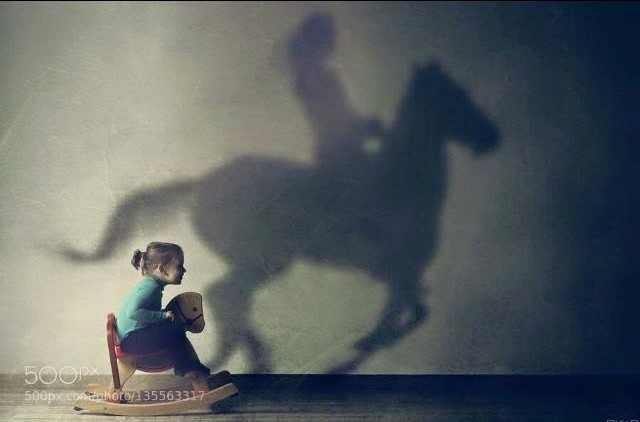
by bsquared5@aol.com | Apr 25, 2016 | Thoughts, Words
Recently, I ran across a video of children discovering their shadows for the first time. Their reactions range from fascination to uncertainty to outright fear. Imagine! Here you are minding your business on a bright, sunny day and suddenly a dark figure appears who (the audacity!) mimics your every move.
Once we grasp that our shadows aren’t out to get us, and assuming they’re not the rascally runaways like the shadow of the unfortunate Peter Pan, we learn how to manipulate them. A tree outside my childhood bedroom cast long shadows on the wall in the evenings. I’d form my hands into shadow puppets of birds, which flew about its branches, landing and taking off with dramatic flutters. A talented friend of ours made comical bunnies, menacing wolves, and cunning crocs come alive with just his hands and a spotlight.
A shadow is, after all, just a projection made from light. This mind-bending photo by 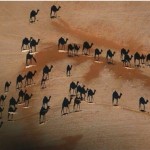 George Steinmetz shows an overhead image of shadows cast by a caravan of camels trekking across the desert sands. What earned this picture its status as one of 2005’s best photos of the year (National Geographic) is that if you look closely, you see the camels are actually the thin white lines. The dark recognizable camel shapes are all camel shadows. Whaaat?! Go ahead, enlarge it and see.
George Steinmetz shows an overhead image of shadows cast by a caravan of camels trekking across the desert sands. What earned this picture its status as one of 2005’s best photos of the year (National Geographic) is that if you look closely, you see the camels are actually the thin white lines. The dark recognizable camel shapes are all camel shadows. Whaaat?! Go ahead, enlarge it and see.
The light, directed just so, projects an image that creates a much greater impression than the object itself. Perspective is slippery. Had this photo been captured at a different time of day, the camel shadows would have instead been long wavy lines trailing behind the caravan. Nothing special. When the light is strongest and at its best for creating projections, it changes what we see of ourselves; it changes how we are seen by others.
The shadows we cast change over time, or maybe it’s that time changes the shadows we cast. In the morning of life, when we are unsure and unsteady, the strength of our shadow may frighten us, like the children in the video, and send us scurrying back into the comfort of shade. Later, conditioned by rejection, loss, or a shaky belief in who we are or what we can be, it’s much easier to stand in someone else’s shadow rather than risk casting our own. We don’t trust what the light might reveal, or perhaps we have our own idea what might be projected and we fear it’s more like a misshapen weasel than a swan.
Once upon a time, we might have been a child on a rocking horse or a wobbly duckling running for cover. A few along the way, parents, treasured teachers, a best friend, see us for who we are meant to be, who know what treasures lie within. They see us from above in the afternoon, and to them the rocking horse seems a galloping stallion, the duckling a darting hummingbird.
One day, we grow tall enough and brave enough to 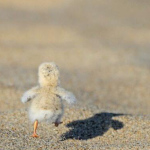 stride into the day with confidence, casting our own shadows boldly and realize what we have been all along. Armed with grace, we see what our own two hands are capable of shaping onto the wall, when we let the light in.
stride into the day with confidence, casting our own shadows boldly and realize what we have been all along. Armed with grace, we see what our own two hands are capable of shaping onto the wall, when we let the light in.
Now, well into my fourth decade, I feel more comfortable in my own skin than at any other time I can remember. It feels good to stretch my muscles in the sunlight, and I find myself lingering to soak up its warmth. I’m more curious than afraid of what images its rays will scatter.
We, as a matter of course, extend this powerful light-wielding vision to our children, family, friends, and even strangers. Why is it we so often withhold it from ourselves and keep our shadow casting small and timid? Standing in the shade, we throw no shadow at all. Our canvases are empty. Afraid to be just ducklings, we never see the hummingbird’s gossamer wings flickering in the sun.
The truth is we are all a bit of both: ducklings and hummingbirds, camels and thin white lines. Each comes from the other; each is lovely and full of light. Don’t wait for permission, perfection, or “the right time.” Cast your shadow, big and bold.
Thanks for reading! To return to the FICTION WRITERS BLOG HOP on Julie Valerie’s website, click here: http://www.julievalerie.com/fiction-writers-blog-hop-apr-2016

by bsquared5@aol.com | Apr 6, 2016 | Thoughts
Back in another life, I flew without wings. All my free time was on the back of a horse, aiming toward ditches, brush piles, or neatly stacked poles, and cantering forward until hooves parted with earth and we sailed upward, buoyant for brief glorious moments.
Most of the time, this is not a point-and-shoot exercise. On TV it looks like the rider balances primly with her shiny boots in the stirrups while the horse bounds around the ring or through the field like a lamb, vaulting obstacles in a neat line. Inside the rider’s head, it’s a different story.
It’s all about timing, the length of a horse’s canter stride and how many of those 3-beat strides fill the space between one jump and the next. If it’s a tricky distance, you might go faster or slower to shorten or lengthen the stride. Just as you’re taking off, you shift your weight forward and slide your hands up his neck a bit, loosening the rein so you’re not jabbing him in the mouth as he stretches over the jump. Would a horse naturally do this on his own? Generally, no, not even to escape an enclosed pasture. Horses are by nature fairly lazy and would much rather swish flies and graze in a sunny field all day.
On one sticky Florida afternoon, I navigated through a cross-country course with obstacles made from tree trunks and other “natural” barriers. My horse was a stocky palomino with a mid-section like a barrel. He had been a poky western pleasure mount before arriving at 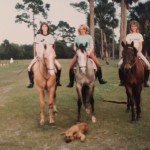 the farm in his reluctant new role as a hunter jumper, and his strides were clipped, his manner resentful, and his driving force was to avoid exertion and retire to the stall as soon as possible.
the farm in his reluctant new role as a hunter jumper, and his strides were clipped, his manner resentful, and his driving force was to avoid exertion and retire to the stall as soon as possible.
My calves ached from the constant “encouragement” this horse required to make it up and over each jump in the field. He’d obediently break into a misleading canter, only to pull up short just before the jump and pop over it grudgingly from a stand still, leaving an unprepared rider wobbling in the saddle. Despite knowing this, I let my guard down at the water jump. It was just a two foot ditch flanked by railroad ties, like hopping a crack in the sidewalk. He could have trotted over it easily, and in fact, that’s just what I expected him to do. Pridefully, I thought, this one was easy. We all know what proverbially follows pride.
Inches before the simple jump, he stopped dead, planting his hooves like a mule. His muscled hind end gathered up behind him like we’d just roped a calf and he was in full skid. I continued on without him. In what I like to imagine was a graceful somersault, I tumbled over his ears and down, cracking my ribs across the railroad ties before flipping backwards into the water.
Icarus, fallen.
I lay on my back in the mud, feeling like a bird must after it has flown full-force into a plate glass window. Submerged, I looked up through about three feet of water, my arms pinned against my throbbing ribs by the solid sides of the jump. Thankfully, I did not try to breathe. I could not even gasp, as all air had been forced from my lungs on impact. A muted sort of quiet surrounded me, like when you sit like a yogi on the bottom of a swimming pool, testing how long you can hold your breath. The blue, cloud studded sky rippled overhead and I saw my horse’s nose as he peeked over the edge, certainly not concerned for my well-being, but more to inquire if we were now, in fact, done for the day.
In short measure, my companions rushed over to hoist me, dripping and muddy, out of the ditch. Rule number one is get back in the saddle. Never end on a bad note. So, up I climbed, each breath ragged and painful, and we approached the jump again. He gauged from my black mood that he should not repeat his little trick and skipped over it this time like he was in a girlish game of hopscotch. Afterwards, I sullenly led my horse back to the barn, water squelching in my boots the whole way.
For a time, while my ribs healed, my wings were clipped. It was one of those formative childhood moments: invincibility is imaginary. While I preferred the air to earth’s tether, the air was risky; lying face-up in a mud hole was always a possibility.
It’s tempting to cling to the sure thing, the comfortable, in lieu of that risk. Sometimes we even prefer our own painful mud hole to climbing out to face what might be humiliation or vulnerable exposure. It’s quiet in there, and we’re kind of used to it. We tiptoe along, watching others achieve goals, be adventurous, learn a new skill, go on that first date after a lost relationship, craft their art.
The view from down in the ditch is less than inspiring. We placate ourselves, pointing out the blue sky and sunshine, but it’s a stifled view we’re used to, settling for a rippling opacity, void of fresh air and birdsong. We cannot be afraid of bruised ribs or bruised egos. Take a breather after the hard knocks, but bruising is only a reminder of what not to do the next time. Because there should be a next time! We are not meant to be ditch dwellers. We are meant to test our mettle, reach beyond our grasp, experience abundance and taste what it is to fly, even without wings.
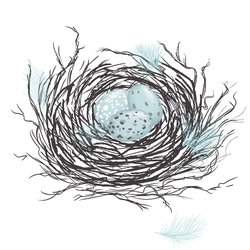
by bsquared5@aol.com | Mar 2, 2016 | Thoughts
Along with a good segment of America, I’ve started to pay attention to Waco, Texas because that’s where Chip and Joanna Gaines host their HGTV show Fixer Upper. Not only are the Gaines’ (as Chip might say) sweeter than candied yams dipped in honey with them big ole pieces of white sugar on ’em and a dadgum cherry on top, but the finished products in the show’s reveals are gorgeous. Like, sometimes jaw-dropping beautiful where the new owners are brought to tears at the thought that they will be living in this actual loveliness.
What I love most about the show, though, is not the vintage, farmhouse style that each of the Gaines’ homes spotlights, but the easy camaraderie of the couple and the sit-on-the-porch-and-have-a-drink vibe that emanates from each house they create. The South is all about place, roots, and home, and Waco rests squarely in that geography.
Southern homes say welcome. As soon as you cross the threshold, you’re liable to be handed a sweating glass of tea or a slice of red velvet cake. The same is true whether you’re at one of those seer-sucker and bowtie events at a Charleston mansion or at Aunt JuJu’s double wide in Hattiesburg, Mississippi. Folks in the South share what they’ve got, from surplus summer-ripe tomatoes to that joy, joy, joy down in their hearts. There’s a reason it’s called Southern hospitality.
For years, we hosted a weekly evening gathering of friends. As the night grew long, we’d put children to bed in every spare corner (sometimes even in the bathtub) while the adults stayed up talking. Everybody knew where the spoon drawer was and could help themselves to whatever was on hand: extra sippy cups, a cup of coffee, or a cookie or two. Often a layer of dust coated the piano and laundry lay on the arm of the sofa, but it wasn’t about that. It was grab your favorite chair, take your shoes off, and stay awhile.
Home is where we breathe deep. It’s the base we come back to after playing tag out in the world all day. Right inside the door, usually in a big messy heap, it’s where we drop our stuff: backpacks, keys, tight shoes, sports gear, winter coat or wet pool towel. It’s where we shed our anxieties: crisis at work, driving in Atlanta traffic, that grade in chemistry. Off come the scratchy sweater and bra along with all the fakery we sometimes show the world: I’m fine, my life is perfect, I’ve got it all together.
Home is where you don’t have to be fussy or extra-starched. If it is to transcend from house to home, it’s messy and full of life. I’m talking about the upstairs window, cracked by a hockey puck, dog nose prints on the storm door, nail polish in the carpet underneath the strategically placed end table, or the desk piled high with papers (it’s a system, people!). I mean messy like dishes all over the kitchen from my son’s experiment with molecular gastronomy (google it), finding glitter in perpetuity from my daughter’s Christmas crafting projects, and my husband’s giant shoes by the door, ready to take the dog for her evening walk.
You can sink into the lumpy couch and have a good cry without people edging away from you, wondering about your particular brand of crazy. If you tire yourself out, you can lie right down and someone might just come along and cover you up with your favorite blanket. Chances are good that even after slammed doors and scowly faces, someone will be saying sorry and someone else will automatically reply “it’s ok,” and mean it.
Growing up in a military family, I moved frequently in my childhood. With each new house, my mother immediately set to work freshly cleaning each corner before moving us in. Then, over time, she set to work removing wallpaper, adding new coats of paint, and making curtains for each window so we would feel settled. Once the grandfather clock was wound and we could hear its reliable chimes every quarter hour, something in me would relax into the new place and begin to see it as home.
It must be a natural instinct to feather these “nests” of ours, to fill them with people and objects that soothe. I’ve been in the meanest huts in Africa where the women still take care to sweep the dirt floors smooth and hang a bright colored piece of fabric on the wall, just because it’s pretty to look at. We want our littles to feel warm and safe there, and guests to feel welcome. It amazes me each year when I find bird nests in the yard, blown down from the latest summer storm. Each one is intricately woven, often lined with feathers, horse hair, stray ribbons or strands of hay. Does this make the nest sturdier in some structural way? I like to think the mama birds just like the way it looks and know it will feel good to come home to after a long morning hunting worms.
Feathering our nests is such a creative effort. Aside from taming the smudges on the refrigerator or crumbs in the carpet, adding pretty colors, favorite pictures, or a bouquet of flowers gathered from the yard nourishes the spirit and that place within that yearns to co-create. I’m no expert, though I love trying new things. So many fellow creatives have such overflowing talents! Here are just a few blogs and instagram posts that might offer you some inspiration, too: Melissa Skidmore, Diane Henkler, Bre Doucette, Lucy at Society 6, Patsy @ blessedmommatobabygirls on Instagram, and Kelly @ eclectically vintage.
Whatever your style, whether you’re an HGTV addict or prefer the bohemian yard-sale look, feather your nest to nourish yourself and others. No one cares if the laundry’s piled up or the baseboards haven’t seen the light of day in months. Aim for peace, but don’t mistake quiet for peace. Families with pets and children and full calendars don’t get many doses of quiet. It’s peace like a river, not a pond. So, grab a glass of tea and take a load off.
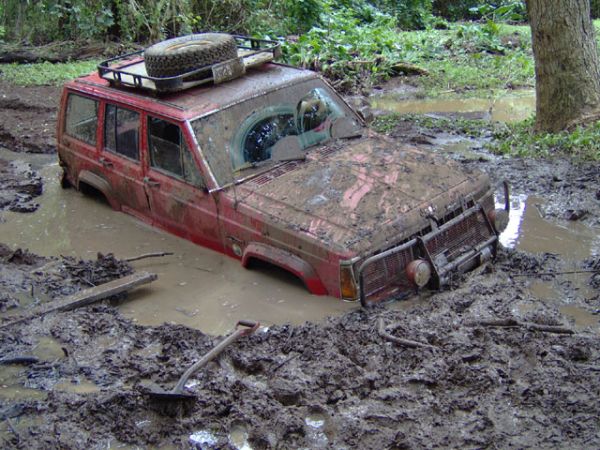
by bsquared5@aol.com | Feb 8, 2016 | Thoughts
In a paralyzing lapse of judgment, a couple of years ago I signed up for one of those gimmicky exercise opportunities, a 5K scheduled for a pleasant spring morning. The Foam Fest, it was called, to be held on beautiful Nashville countryside property. The kicker–the fun part, as I billed it to my kids–was that it was also an obstacle course, with elements like plank walls and ditches. They would be allowed, even expected, to get filthy.

Since the universe frequently uses me for free entertainment, the day of the event the temperature dropped twenty degrees and so began an unrelenting miserably cold drizzle. My offspring cast wary looks at the gray skies and kept glancing at me (“the responsible adult”) to see when I would call the whole thing off. No, no! We would forge ahead! What’s a little rain? It would be refreshing! We could DO THIS.
We fought valiantly. Slogging through ankle deep mud, we cracked our knees on jagged rocks, helped heave and toss one another over the plank walls, and dragged each other through the inner tubes linked in waist-deep water. We shouted encouragement as we army crawled, soaking wet, beneath an electrified mesh net, and we cheered weakly, shaking with hunger, when we spied the finish line. By that time, we were thoroughly soaked, muddy and matted from head to toe, and so freezing cold that none of us could feel our fingers or toes. “Almost there!” I buoyed them. “We’ll get dried off and go get some warm lunch!”
Amidst crowds of hundreds of equally filthy runners, we stood at the back of the van and stripped off wet clothing. Modesty? Decorum? Such words meant little in the face of frostbite and low blood sugar. With the heater on full blast, I started the van to head on toward lunch and a hot shower. We moved exactly two feet. During the race, as the rain poured down, the hundreds of cars parked in the open cow pastures had slowly sunk, thousands of tires sucking into the soft mud below. We were stuck. Even the big, tough four wheel drives were spinning their wheels, mud showering any car within 10 feet.
For the first hour or two, people pitched in, neighbor helping neighbor, as teams pushed the lucky cars out one by one. As each car moved, it left impassable muddy ruts behind, and the situation worsened. We scavenged every stray cheerio and stale granola bar from beneath the seats, grateful it had been months since we last vacuumed the van. As time wore on and the good Samaritans dwindled, people became more 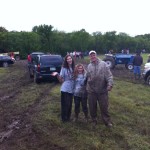 desperate. Two giant tractors were commandeered to pull the vehicles out one at a time. Each time a tractor entered the field, people waved frantically, begging to be next. My husband drove almost two hours to bring us food, tramping across the fields with it hidden in his coat. We fell upon it like savage dogs.
desperate. Two giant tractors were commandeered to pull the vehicles out one at a time. Each time a tractor entered the field, people waved frantically, begging to be next. My husband drove almost two hours to bring us food, tramping across the fields with it hidden in his coat. We fell upon it like savage dogs.
Six. Hours. Six hours after we passed the finish line, the tractor pulled us out to the road to head home. Months later, after multiple car washes, I was still finding mud caked in the door frames of the van and my children shot me withering looks of how could you?! every time anyone brought it up. Now, almost three years later, I think we’ve gotten to the point where we can laugh about it, albeit with a kind of careful, nervous tittering.
No way around it, stuck is tough to take. This is true whether we’re trapped in a muddy field or whether it’s more of a feeling or state that’s got us mired. Our culture adds pressure with demands for constant progress, advancement, transformations, and breakthroughs. So we struggle and strive in what fee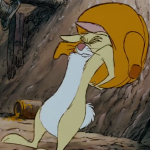 ls sometimes like quicksand, unhappy with our “boring” marriage, fed up with our “monotonous” job, or impatient with not being able to “move on” from grief, fear, or anxiety. Or maybe it’s just that we’ve worked forever on our one stubborn character flaw and it never seems to improve. Endlessly treading water can be exhausting. Anger and fear take over and we scream, wail, and fret our way into a tizzy, thinking we’ll use force of will and huge energy reserves to budge the immovable.
ls sometimes like quicksand, unhappy with our “boring” marriage, fed up with our “monotonous” job, or impatient with not being able to “move on” from grief, fear, or anxiety. Or maybe it’s just that we’ve worked forever on our one stubborn character flaw and it never seems to improve. Endlessly treading water can be exhausting. Anger and fear take over and we scream, wail, and fret our way into a tizzy, thinking we’ll use force of will and huge energy reserves to budge the immovable.
But that’s if we look at “stuck” as only inherently negative. What if stuck is the best and simplest way to get our attention? As a new mom, I was shocked when the nurses at the hospital demonstrated swaddling. Take a red-faced, screaming, flailing infant and wrap her snugly in a blanket, her limbs effectively pinned, and she often calms right down, even drifts off to sleep. What is this gypsy magic?!
Turns out, mini baby straight jackets keep babies from being disturbed by their own startle reflex. Hmm. Perhaps we’re wired from birth to need periods of being “stuck” to allow us to calm down, feel the Zen, and cut out the deafening mental chatter that runs 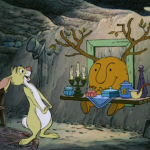 nonstop otherwise. Once we stop holding our breath in panic and resist that urge to gnaw off our own limb rather than face restraint in any form, a sense of calm acceptance takes over, new ideas and creative solutions bubble up from the silence, and the situation may appear totally different–less Pit of Despair and more Source of Revelation.
nonstop otherwise. Once we stop holding our breath in panic and resist that urge to gnaw off our own limb rather than face restraint in any form, a sense of calm acceptance takes over, new ideas and creative solutions bubble up from the silence, and the situation may appear totally different–less Pit of Despair and more Source of Revelation.
Could it be that when we feel the most “stuck” on land, our underground rivers are allowed to course freely, leading to wisdom and a depth of character we would have missed in our bustling path toward progress? If we sit still and surrender to the present situation for a minute, a day, a year, what might we learn?
I’m not saying we should give up or “settle.” The alternative to treading water is not to sink to a watery grave, but rather to float on your back for awhile. If we simmer down and sit with things when we’ve hit a wall spiritually, emotionally, or professionally, taking stock without the fight or flight reflex screaming in our ears, we might be surprised. Stuck can bring a startling peace. Being stuck can help us notice people or resources we had overlooked or dismissed in our flailing. It’s the truth that gets us unstuck, not striving or barreling or flailing. The truth. Oh, and sometimes tractors.
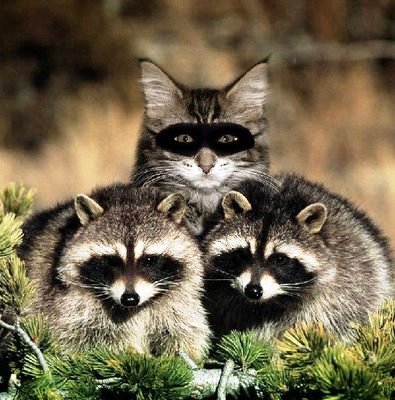
by bsquared5@aol.com | Jan 22, 2016 | Thoughts
“All the world’s a stage,” Shakespeare said in As You Like It, “and all the men and women merely players.” Maybe this explains why many of us feel like impostors. We may master the lingo, wear the uniform, even get the degree, but there’s always this feeling of looking over our shoulder, waiting for the men in black to bust in and rip off our disguise: “Aha! Just who do you think you are?” Back in the late 70’s, a pair of psychologists actually coined the term “impostor syndrome,” a persistent fear of being exposed as a fraud. Despite external evidence of competence, about 70% of us, particularly high-achieving women, remain convinced we are phonies.
In my first class in grad school, I remember looking around the conference table at my classmates, all of whom seemed intellectually superior, able to discuss literary theory as easily as last night’s sitcom. I did a lot of nodding and concurring, mastered pensive expressions, and all but took up pipe smoking in an effort to seem up to par. What I failed to realize is that half of them were doing the same thing.
Martha Beck recounts a fantastic anecdote in her book Expecting Adam. As a PhD student at Harvard, the bastion of intelligence, she once stopped in a friend’s lab and watched her performing a psychology experiment on some rats, monitoring them as they swam in a kiddie pool –a Smurf kiddie pool. When she gets to her next class a little late, she apologizes, “I’m sorry. I was in the Psych lab, watching rats swim around in a Smurf pool.” Not to be outdone by her, the instructor, a fellow student, and a visiting dignitary all pompously pipe up: “How’s Smurf’s work going?” “I read his last article.” “He’s had some remarkable findings.” The important thing–more important than being smart–is the prestige bestowed by appearing smart.
I once presented a paper to a room full of scientists at an environmental conference in Rome, Italy. I’d done the research, written the report, and polished the presentation until I could field any question, despite having had not one chemistry class in college. For twenty minutes at least, I was the expert and knew the material better than anyone else in the room. I would have been much more comfortable talking about themes in 18th century novels, but that wasn’t my job. Sheer fakery. But it worked out. I met some interesting people, and the research was well-received. I felt a little like Leo DiCaprio in Catch Me If You Can. Just carry a clipboard and you’re automatically in.
The other day my son questioned another parent’s behavior. I told him that she’d never had a teenaged son before and was just doing the best she could. No one gets a step-by-step manual for every parenting situation. At times, we are all flying by the seat of our pants. I remember leaving the hospital with my firstborn, flabbergasted that these people would just give her to us. Clearly, we were unprepared. Obviously, we had no idea what we were doing. I spent most of my kids’ childhoods feeling like an impostor, amazed that The Experts weren’t bursting in with video footage, eager to point to all the evidence of my screw-ups, mistakes, and fodder for their future therapy.
I toppled off the lofty parent pedestal a long time ago. My offspring are (all too) aware I’m not perfect and sometimes making it up as I go. Here’s the secret: we all are! We are all first-time, amateur humans winging it. No one is an expert, even if they’re carrying the clipboard. Fortunately, that allows for lots of teaching moments on forgiveness, grace, and how we learn from mistakes.
Unfortunately, feeling like a phony tends to limit the risks we’re willing to take. We’re so worried about being unveiled that we pull back–from opportunities, relationships, or dreams. If we are trapped by the “appear competent at all costs” lie, we keep our challenges–and consequently our victories–small.
Doesn’t it get tiring, this rationed life? So many of us are reined in, our potential and gifts spring-tight and begging for release, but we tiptoe obediently to avoid appearing foolish. A grace-filled life is abundant, not careful. We all have symphonies in us, waiting to be heard. How can we muffle the music because we might look silly? Disrobe, unmask, and go take a dip in the Smurf pool.
reined in, our potential and gifts spring-tight and begging for release, but we tiptoe obediently to avoid appearing foolish. A grace-filled life is abundant, not careful. We all have symphonies in us, waiting to be heard. How can we muffle the music because we might look silly? Disrobe, unmask, and go take a dip in the Smurf pool.

 George Steinmetz shows an overhead image of shadows cast by a caravan of camels trekking across the desert sands. What earned this picture its status as one of 2005’s best photos of the year (National Geographic) is that if you look closely, you see the camels are actually the thin white lines. The dark recognizable camel shapes are all camel shadows. Whaaat?! Go ahead, enlarge it and see.
George Steinmetz shows an overhead image of shadows cast by a caravan of camels trekking across the desert sands. What earned this picture its status as one of 2005’s best photos of the year (National Geographic) is that if you look closely, you see the camels are actually the thin white lines. The dark recognizable camel shapes are all camel shadows. Whaaat?! Go ahead, enlarge it and see. stride into the day with confidence, casting our own shadows boldly and realize what we have been all along. Armed with grace, we see what our own two hands are capable of shaping onto the wall, when we let the light in.
stride into the day with confidence, casting our own shadows boldly and realize what we have been all along. Armed with grace, we see what our own two hands are capable of shaping onto the wall, when we let the light in.









